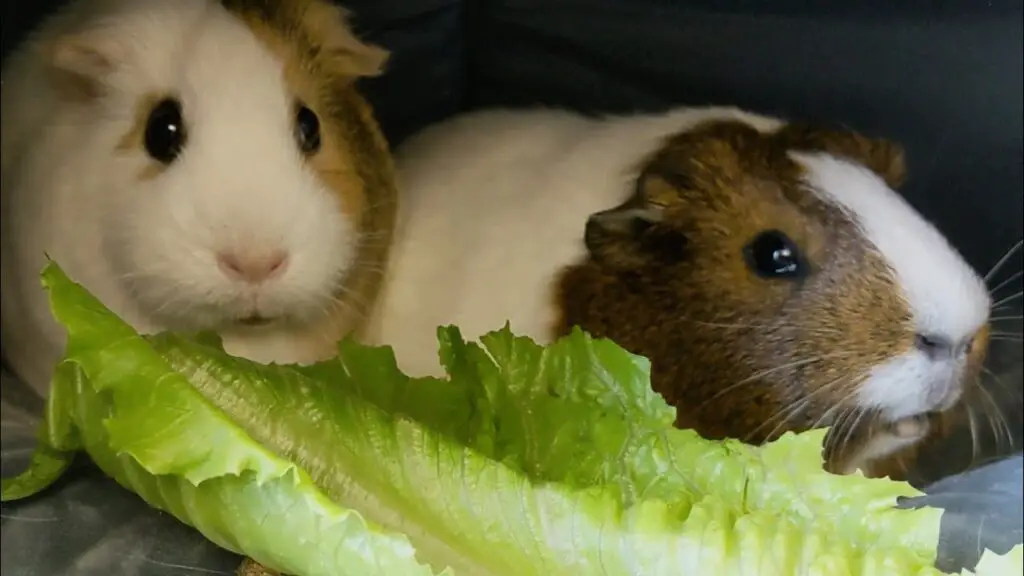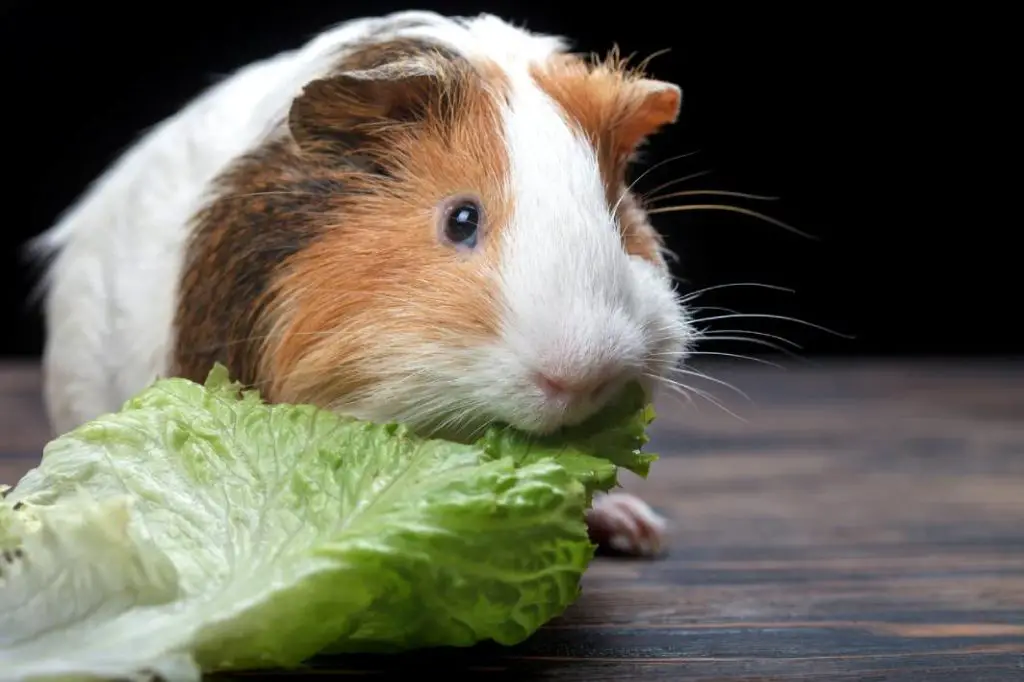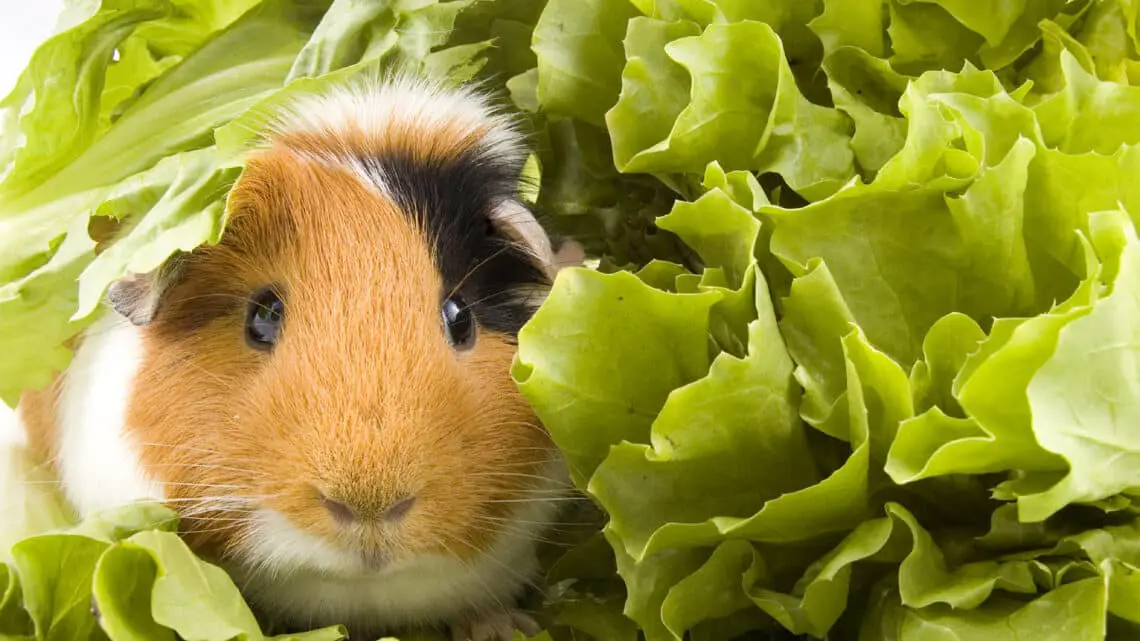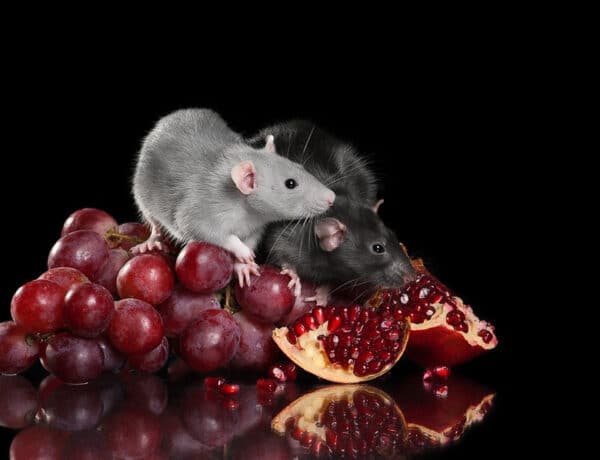Introduction
What Lettuce Can Guinea Pigs Eat: The verdant world of lettuce for our furry friends, the guinea pigs Just like humans, these adorable rodents have dietary preferences and nutritional needs that deserve our attention and care. The leafy greens and what types of lettuce are suitable for guinea pigs to munch on. As conscientious caregivers, understanding their dietary requirements is essential to ensure their health and happiness. The varieties of lettuce that guinea pigs can safely consume, shedding light on their preferences and the benefits of incorporating these greens into their diet.
Guinea pigs are delightful and gentle herbivores, and their dietary needs are essential for their well-being. Lettuce, often associated with salads in our own meals, can indeed be a part of their balanced diet when chosen and offered with care. We’ll discover that not all lettuce varieties are created equal when it comes to guinea pig nutrition. While some types can be nutritious and beneficial, others may have potential drawbacks. Providing fresh, clean lettuce as a supplement to their staple diet of hay and pellets.
We’ll consider the significance of vitamin C in a guinea pig diet, as they are unable to produce this vital nutrient themselves. Some types of lettuce can serve as a valuable source of vitamin C, which is crucial for their overall health. We’ll also touch on portion control and the moderation when offering lettuce, as too much can lead to digestive issues. The various types of lettuce and their suitability for guinea pigs, you can ensure that your furry companions enjoy a balanced, healthy, and delightful diet.

What lettuce can guinea pigs not eat?
Icebergs also have a higher water content than other lettuces. Too many watery foods can cause diarrhea and as Iceberg lettuces don’t give your guinea pigs the nutritional benefits that other lettuces offer, we advise you to avoid feeding Iceberg lettuce to your guinea pigs.
Iceberg Lettuce: Iceberg lettuce has a high water content and lacks the essential nutrients that guinea pigs need. Feeding them Iceberg lettuce can lead to digestive issues and does not contribute to their overall health.
Lettuce with High Oxalic Acid Content: Lettuces with high levels of oxalic acid, such as spinach and Swiss chard, should be given sparingly or avoided altogether. Oxalic acid can interfere with calcium absorption and may contribute to the formation of bladder stones in guinea pigs.
Lettuce with High Nitrate Content: Lettuces that have been grown in soil with high nitrate levels, such as some types of red leaf or butterhead lettuce, can be harmful to guinea pigs. High nitrates can lead to health problems, so it’s essential to choose lettuce varieties grown in safe conditions.
Rotten or Spoiled Lettuce: Never feed guinea pigs lettuce that is wilted, slimy, or has visible signs of rot. Spoiled lettuce can cause gastrointestinal upset and may even be toxic.
Can guinea pigs eat all lettuce?
Their bodies will always let you know if it’s time to switch out a type of lettuce or to reduce or increase the amount you’re giving them make sure you listen.
Variety: Guinea pigs can consume a variety of lettuce types, including romaine lettuce and green leaf lettuce, in limited amounts. These lettuce varieties are lower in harmful compounds like oxalic acid and can provide some essential nutrients.
Individual Tolerance: Each guinea pig is unique, and their tolerance to specific foods can vary. Some guinea pigs may tolerate lettuce better than others. It’s crucial to observe your guinea pig’s reaction when introducing new foods or adjusting their diet.
Moderation: Regardless of the lettuce type, moderation is key. Lettuce should be a supplementary treat rather than a primary source of nutrition. Too much lettuce can lead to digestive issues, so use it sparingly.
Freshness: Always offer fresh, clean lettuce to your guinea pigs. Avoid wilted or spoiled leaves, as they can be harmful to their health.
Balanced Diet: Remember that lettuce is just one component of a guinea pig’s diet. Their main dietary staples should be high-quality hay and guinea pig pellets, which provide essential nutrients and fiber for digestion.
Communication: Pay attention to your guinea pig’s behavior and health. If they show signs of discomfort, such as diarrhea or bloating, after eating lettuce, it may be an indication that it doesn’t agree with them. In such cases, it’s best to reduce or eliminate lettuce from their diet.
What can guinea pigs eat iceberg lettuce?
Iceberg lettuce is not a good choice for guinea pigs as it is low in nutrients and can cause digestive upset. While lettuce is generally a safe and healthy food for guinea pigs, iceberg lettuce is not a good option because it is mostly water and has very little nutritional value.
Low Nutritional Value: Iceberg lettuce is primarily composed of water and lacks the essential nutrients that guinea pigs require in their diet. It is deficient in key vitamins and minerals, making it a poor choice for their overall health.
Digestive Upset: The high water content in iceberg lettuce can lead to digestive problems in guinea pigs, such as diarrhea. Their sensitive digestive systems are not well-suited to handling large quantities of watery foods.
Better Alternatives: There are other lettuce varieties, like romaine lettuce and green leaf lettuce, that offer more nutritional benefits and are safer options for guinea pigs. These varieties are lower in water content and higher in essential nutrients.
Can guinea pigs eat the whole romaine lettuce?
Romaine lettuce hearts are the same thing as romaine lettuce, just not chopped up and bagged. Romaine lettuce is a veg guinea pigs can have daily if they are used to it. If you don’t want to feed it daily you should feed it 3 times a week.
Guinea pigs can eat both the outer leaves and the heart (center) of romaine lettuce. Romaine lettuce is generally safe for guinea pigs and is a good source of essential nutrients like vitamin C and fiber. While it can be a part of their regular diet, it’s essential to offer it in moderation, just like other vegetables.
You can choose to feed romaine lettuce to your guinea pigs daily if they are accustomed to it and tolerate it well. However, if you provide variety in their diet, feeding it 3 times a week, is a suitable approach. Variety in their vegetables helps ensure they receive a wide range of nutrients and prevents them from getting bored with their food.
To wash the lettuce thoroughly, remove any wilted or discolored parts, and cut it into small, manageable pieces to make it easier for your guinea pigs to eat. Always monitor your guinea pigs for any signs of digestive upset or other adverse reactions when introducing new foods or making changes to their diet.
Is lettuce poisonous to guinea pigs?
As a general rule, guinea pigs can eat all varieties of lettuce except iceberg. The high water content in lettuce can cause diarrhea in some guinea pigs, so feed in reasonable amounts.
Variety Matters: While most lettuce varieties are safe for guinea pigs, iceberg lettuce is an exception. Iceberg lettuce is not recommended because it has very little nutritional value and a high water content, which can lead to digestive upset, including diarrhea.
Moderation Is Key: Even with safe lettuce types like romaine or green leaf lettuce, it’s crucial to feed them in moderation. Too much lettuce, or any watery vegetable, can indeed lead to digestive problems in guinea pigs. It should be a supplementary treat rather than a primary source of nutrition.
Wash and Prepare Properly: Always wash lettuce thoroughly to remove any potential contaminants or pesticides. Remove any wilted or discolored parts before feeding it to your guinea pigs.
Balanced Diet: Guinea pigs have specific dietary requirements, with hay and high-quality guinea pig pellets forming the foundation of their diet. Vegetables, including lettuce, should complement their primary food sources.
What veggies cause diarrhea in guinea pigs?
Iceberg lettuce and the lighter lettuce give guinea pigs diarrhea. Nobody likes a poopy butt. Endive, dandelion greens, carrot tops, there are a lot of choices out there.
Iceberg Lettuce: Iceberg lettuce is notorious for its high water content and low nutritional value. Feeding it to guinea pigs can lead to diarrhea due to its watery nature.
Lighter Lettuce Varieties: Lighter lettuce varieties, such as iceberg and butterhead lettuce, are generally less suitable for guinea pigs because of their high water content and lower nutrient content.
Cabbage: Cabbage, when given in large quantities, can be gas-inducing and may lead to loose stools in guinea pigs. While it’s not toxic, it should be fed sparingly.
Broccoli and Cauliflower: These vegetables, when consumed excessively, can cause gas and potentially lead to digestive discomfort and diarrhea in guinea pigs.
Fruits High in Sugar: While not vegetables, fruits like apples and grapes, when given in large quantities due to their high sugar content, can lead to gastrointestinal issues in guinea pigs.
Can guinea pigs eat lettuce and carrots?
Kale, carrots, spinach, lettuce, and squash are all nutritious options for guinea pigs, but some better than others. Guinea pigs also do well with green or red sweet peppers, parsley, nutrient rich lettuce like romaine, cantaloupe, dandelion greens, and cilantro.
Lettuce: Romaine lettuce, green leaf lettuce, and other nutrient-rich varieties like red leaf lettuce are suitable choices for guinea pigs. These types of lettuce are lower in water content and higher in essential nutrients compared to iceberg lettuce, which should be avoided. Lettuce can be a valuable source of hydration and some vitamins for guinea pigs.
Carrots: Carrots are a good source of vitamin A and can be a tasty treat for guinea pigs. However, they are also high in natural sugars, so they should be given in moderation. Small carrot slices or pieces can be a great occasional to their diet.
Variety: While lettuce and carrots are nutritious, it’s important to offer a variety of vegetables to ensure guinea pigs receive a wide range of nutrients. Other suitable options include kale, spinach, bell peppers, parsley, dandelion greens, cilantro, and small amounts of fruit like cantaloupe.
Portion Control: Guinea pigs have sensitive digestive systems, so it’s crucial to provide these vegetables in small portions. Too much of any food can lead to digestive issues, including diarrhea, so moderation is key.
Freshness and Preparation: Always offer fresh, clean vegetables to your guinea pigs. Remove any wilted or discolored parts before feeding them. Wash all vegetables thoroughly to remove potential contaminants.
Can guinea pigs eat lettuce and tomatoes?
While tomatoes can be a healthy treat for guinea pigs, do not feed them the leaves, stems or other non-fruit parts of the tomato plant. These contain high levels of tomatine, which can be toxic if eaten in large enough quantities,
Lettuce: Guinea pigs can enjoy certain types of lettuce in moderation. Romaine lettuce, green leaf lettuce, and red leaf lettuce are generally safe options. However, it’s crucial to feed lettuce in limited amounts because it has a high water content and low nutritional value. Lettuce should be just one component of their diet and not the primary source of nutrition.
Tomatoes: Guinea pigs can eat ripe tomatoes as an occasional treat. Tomatoes contain vitamin C, which is beneficial for guinea pigs. However, they should be given in small portions due to their acidity and sugar content. Also, make sure to remove any green parts, including the leaves and stems, as they contain tomatine, which can be harmful if consumed in large quantities.

Conclusion
The place of lettuce in a guinea pig’s diet, it’s worth emphasizing the vigilance and attentiveness as a responsible guinea pig owner. Guinea pigs are delicate creatures, and their dietary needs can vary from one individual to another. Therefore, it’s crucial to observe your guinea pig’s reactions to different foods, including lettuce, to ensure it agrees with their digestive system and doesn’t cause any adverse effects like diarrhea or bloating.
Lettuce should never be a substitute for the staple components of their diet, which include hay and high-quality guinea pig pellets. These are the primary sources of fiber, essential nutrients, and calories that guinea pigs require to maintain their health and vitality. Lettuce, while a delightful addition, should not overshadow these crucial dietary elements. A substantial portion of their diet consists of vegetables, and lettuce is often a favorite among these furry companions.
That the health of your guinea pig relies on not just what they eat but also the quality of their living conditions, social interaction, and regular veterinary care. A holistic approach to their well-being, which includes a well-balanced diet, will help ensure your guinea pig enjoys a happy and healthy life. Guinea pigs are beloved pets known for their charming personalities and unique dietary needs.





No Comments